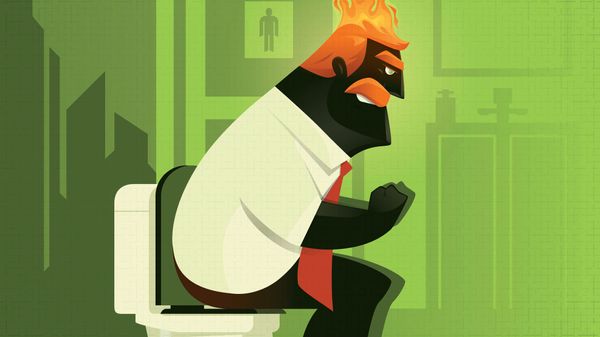
Toilet stool, like the Squatty Potty have been gaining popularity in recent years. The idea behind them is that they allow the human body to assume a more natural position for pooping (with the knees drawn up) which can help fight constipation. Now, researchers can lend some scientific credence to back up these claims, thanks to a study conducted at The Ohio State University and published in the Journal of Clinical Gastroenterology in October 2018.
"A large portion of the world including Asia and the Middle East utilizes some form of squatting while having a bowel movement," emails Dr. Rohan Modi, a gastroenterology fellow at University of Virginia, who worked with the research team during a previous position at The Ohio State University Wexner Medical Center and College of Medicine. "We see a number of people in both the clinic and hospital setting who struggle with constipation or incomplete emptying that sparked our interest in using this toilet stool as a non-pharmacologic option for patients."
Advertisement
"Toilet stools have become a part of pop culture after being on YouTube videos and TV shows," adds Dr. Peter Stanich, an assistant professor of gastroenterology, hepatology and nutrition at Ohio State, who also worked on the study. "They are frequently brought up by patients, as well as friends and family members. To really answer the questions on effectiveness, someone needed to assess their benefit in a scientific way."
The study, which Stanich believes is the first of its kind in the U.S., enlisted 52 volunteer participants. Even though they were otherwise healthy, 44 percent reported problems with straining on the toilet and one-third experienced difficulty totally emptying their bowels in one movement. For four weeks the participants propped their feet on a toilet stool when taking care of business.
The results were impressive: 90 percent reported less straining than prior to using the stool, and 71 percent said they enjoy faster bowel movements. In addition, two-thirds of the participants plan to continue using a toilet stool after the conclusion of the study.
Chronic problems with constipation can cause hemorrhoids, anal fissures and intestinal issues, and they are more common than you might think. In fact, 16 out of 100 American adults have trouble with constipation, with the number skyrocketing to 33 out of 100 once they reach their 60th birthday, according to the National Institutes of Health.

Many people turn to dietary changes or laxatives to find relief. However, nothing was working for Bobby Edwards and his family, who designed the first Squatty Potty using common household items.
Advertisement

